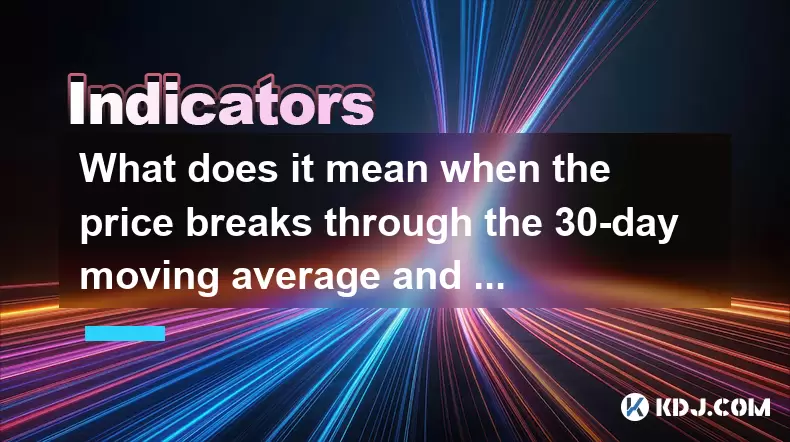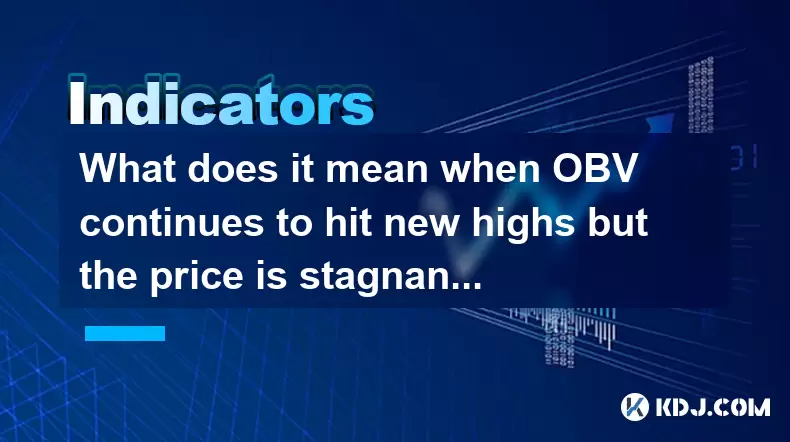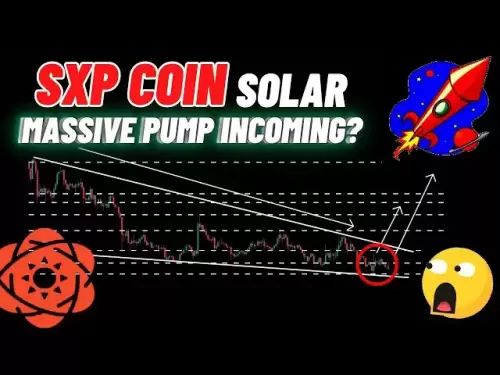-
 Bitcoin
Bitcoin $117500
2.04% -
 Ethereum
Ethereum $3759
3.02% -
 XRP
XRP $3.171
3.30% -
 Tether USDt
Tether USDt $1.000
0.03% -
 BNB
BNB $782.4
2.52% -
 Solana
Solana $187.2
5.62% -
 USDC
USDC $0.0000
0.02% -
 Dogecoin
Dogecoin $0.2380
5.26% -
 TRON
TRON $0.3175
1.07% -
 Cardano
Cardano $0.8227
4.03% -
 Hyperliquid
Hyperliquid $44.50
5.44% -
 Sui
Sui $4.020
10.07% -
 Stellar
Stellar $0.4396
6.28% -
 Chainlink
Chainlink $18.32
4.55% -
 Hedera
Hedera $0.2628
10.71% -
 Bitcoin Cash
Bitcoin Cash $554.8
4.90% -
 Avalanche
Avalanche $24.20
4.60% -
 Litecoin
Litecoin $113.7
2.31% -
 Shiba Inu
Shiba Inu $0.00001413
5.99% -
 UNUS SED LEO
UNUS SED LEO $8.984
0.11% -
 Toncoin
Toncoin $3.326
7.22% -
 Ethena USDe
Ethena USDe $1.001
0.00% -
 Uniswap
Uniswap $10.49
4.56% -
 Polkadot
Polkadot $4.092
4.02% -
 Monero
Monero $326.6
1.30% -
 Dai
Dai $1.000
-0.01% -
 Bitget Token
Bitget Token $4.570
2.49% -
 Pepe
Pepe $0.00001267
5.10% -
 Aave
Aave $297.3
3.10% -
 Cronos
Cronos $0.1344
4.10%
What does it mean when the price breaks through the 30-day moving average and is accompanied by a large volume?
A breakout above the 30-day MA on high volume signals strong bullish momentum, often marking the start of a new uptrend in cryptocurrency markets.
Jul 26, 2025 at 03:35 am

Understanding the 30-Day Moving Average in Cryptocurrency Trading
The 30-day moving average (MA) is a widely used technical indicator in the cryptocurrency market that calculates the average closing price of an asset over the past 30 days. This metric smooths out price data to form a trend-following indicator, helping traders identify the general direction of price movement. When the current price is above the 30-day MA, it often signals a bullish trend, while a price below the MA may indicate bearish momentum. Traders use this average to filter out short-term volatility and focus on longer-term trends. The 30-day MA acts as dynamic support or resistance, depending on market conditions. When the price approaches this level from below, it can serve as a support zone. Conversely, when the price is falling and approaches the MA from above, it may act as resistance.
Significance of Price Breaking Through the 30-Day Moving Average
A breakthrough of the 30-day moving average occurs when the current price moves decisively above or below this average. A breakout to the upside suggests that recent buying pressure has overcome previous average selling pressure, potentially signaling the start of a new uptrend. Conversely, a breakdown below the MA may indicate increasing selling pressure and the beginning of a downtrend. The strength of this signal increases when the breakout is confirmed over multiple trading sessions rather than occurring during a single volatile candle. Traders watch for closing prices that remain consistently above or below the 30-day MA, as intraday spikes can be misleading. This confirmation helps reduce false signals caused by market noise or short-term speculation.
The Role of High Trading Volume in Confirming Breakouts
Volume is a critical component in validating the strength of a price movement. When a breakout from the 30-day MA is accompanied by large trading volume, it indicates strong market participation and conviction behind the move. High volume during an upward breakout suggests that a significant number of buyers are entering the market, possibly due to positive news, improved sentiment, or institutional interest. Similarly, high volume on a downward break implies aggressive selling, potentially driven by fear, negative developments, or profit-taking. In contrast, a breakout with low volume may lack sustainability and could result in a false breakout or price reversal. Therefore, volume serves as a confirmation tool—without it, the breakout may not be trusted by experienced traders.
How to Identify and Verify a High-Volume Breakout
To determine whether a price breakout from the 30-day MA is supported by strong volume, follow these steps:
- Open a cryptocurrency trading chart on a platform like TradingView, Binance, or Coinbase Pro.
- Apply the 30-day simple moving average (SMA) to the price chart by selecting the indicator and setting the period to 30.
- Enable the volume histogram at the bottom of the chart to visualize daily trading volume.
- Look for a candlestick that closes clearly above or below the 30-day MA line.
- Check if the volume bar for that day is significantly taller than the average volume bars of the previous 10–15 days.
- Confirm that the price maintains its position beyond the MA for at least two to three consecutive days.
- Use additional indicators like the Relative Strength Index (RSI) or MACD to assess whether the momentum supports the breakout.
This process helps distinguish between genuine breakouts and temporary price spikes. For example, if Bitcoin closes above its 30-day MA on a day when volume is 150% higher than its 20-day average, and the RSI moves from neutral to overbought, this reinforces the validity of the bullish signal.
Psychological and Market Implications of the Breakout
The convergence of a price breakout and high volume reflects shifts in market psychology. When the price breaks above the 30-day MA on strong volume, it often triggers follow-through buying from traders who missed the initial move. This can create a self-reinforcing cycle where rising prices attract more buyers, pushing the asset higher. Stop-loss orders placed just below the MA may also be triggered during a breakout, adding to upward momentum. On the flip side, a breakdown below the MA with high volume can spark panic selling, especially among leveraged traders. Margin calls and automated sell algorithms may accelerate the decline. The 30-day MA becomes a psychological benchmark—once breached, it can shift trader expectations and alter short-term strategies. For instance, traders who were previously holding long positions may exit or even reverse to short positions after a confirmed breakdown.
Common Misinterpretations and Risk Management Considerations
Not every breakout from the 30-day MA leads to a sustained trend. Some breakouts fail, especially when they occur without volume confirmation or during low-liquidity periods such as weekends. A false breakout happens when the price briefly moves beyond the MA but quickly reverses, trapping traders who entered based on the initial signal. To mitigate this risk, traders should avoid entering positions immediately after the first breakout candle. Instead, they can wait for retesting of the 30-day MA as support or resistance after the breakout. If the price pulls back to the MA and holds, it strengthens the breakout's credibility. Position sizing, stop-loss placement, and portfolio diversification are essential when trading based on MA breakouts. Using a stop-loss just below the breakout candle’s low (for long positions) or above its high (for shorts) helps manage downside risk.
Frequently Asked Questions
What is the difference between a simple and exponential 30-day moving average in breakout analysis?
The simple moving average (SMA) assigns equal weight to all 30 days, while the exponential moving average (EMA) gives more weight to recent prices. During a breakout, the EMA may react faster to price changes, potentially generating earlier signals. However, the SMA is less prone to whipsaws and is preferred by traders seeking smoother, more reliable trend confirmation.
Can a breakout from the 30-day MA occur during a sideways market?
Yes, breakouts can happen in ranging markets when volatility increases. In such cases, the breakout may lack follow-through if the broader market lacks directional momentum. Traders should assess the overall market structure and use tools like Bollinger Bands or Average True Range (ATR) to evaluate volatility before acting.
How does the 30-day MA compare to other moving averages like the 50-day or 200-day?
The 30-day MA is more sensitive to recent price changes than the 50-day or 200-day MAs, making it suitable for short- to medium-term trading. The 200-day MA is often seen as a long-term trend indicator, while the 50-day sits between short and long-term views. Combining multiple MAs can provide layered confirmation of trend strength.
Is the 30-day moving average effective across all cryptocurrencies?
While the 30-day MA is widely used, its effectiveness varies by asset. Highly volatile altcoins may generate more false breakouts due to pump-and-dump schemes or low liquidity. Major cryptocurrencies like Bitcoin and Ethereum tend to produce more reliable signals due to higher trading volume and market depth.
Disclaimer:info@kdj.com
The information provided is not trading advice. kdj.com does not assume any responsibility for any investments made based on the information provided in this article. Cryptocurrencies are highly volatile and it is highly recommended that you invest with caution after thorough research!
If you believe that the content used on this website infringes your copyright, please contact us immediately (info@kdj.com) and we will delete it promptly.
- Pi Coin, Wallet Features, and Coinbase: What's the Buzz?
- 2025-07-26 18:30:12
- Worldcoin, Punisher Coin, and the Meme Coin Mania: What's the Haps?
- 2025-07-26 18:30:12
- Dogecoin Trajectory: From Meme to Mainstream and Beyond in Crypto
- 2025-07-26 17:10:14
- LasMeta, Pyth Network, NovaDrop NFTs: Decoding the Buzz
- 2025-07-26 16:30:12
- SHIB Long/Short: Riding the Shiba Inu Waves Like a Pro
- 2025-07-26 17:50:12
- VeChain (VET) Price Prediction: Will VET Reach $0.040 in August 2025?
- 2025-07-26 16:50:12
Related knowledge

What does it mean that the rebound is blocked after the moving average is arranged in a short position for the first time?
Jul 26,2025 at 10:51am
Understanding the Short-Term Moving Average ConfigurationWhen traders refer to a 'short position arrangement' in moving averages, they are describing ...

What does it mean when the price rises along the 5-day moving average for five consecutive days?
Jul 26,2025 at 08:07am
Understanding the 5-Day Moving Average in Cryptocurrency TradingThe 5-day moving average (5DMA) is a widely used technical indicator in cryptocurrency...

What does it mean when ADX breaks through 25 and +DI continues to rise?
Jul 26,2025 at 07:00pm
Understanding the ADX Indicator and Its ThresholdsThe Average Directional Index (ADX) is a technical analysis tool used to measure the strength of a t...

What does it mean when the price breaks through the 60-day moving average with a large volume but shrinks the next day?
Jul 26,2025 at 06:01am
Understanding the 60-Day Moving Average in Cryptocurrency TradingThe 60-day moving average (60DMA) is a widely used technical indicator in the cryptoc...

What does the sudden rise of ADX in DMI accompanied by +DI crossing -DI indicate?
Jul 26,2025 at 01:21pm
Understanding the DMI and Its Core ComponentsThe Directional Movement Index (DMI) is a technical analysis tool used to determine the presence and stre...

What does it mean when OBV continues to hit new highs but the price is stagnant?
Jul 26,2025 at 09:57am
Understanding the On-Balance Volume (OBV) IndicatorThe On-Balance Volume (OBV) is a technical analysis indicator that uses volume flow to predict chan...

What does it mean that the rebound is blocked after the moving average is arranged in a short position for the first time?
Jul 26,2025 at 10:51am
Understanding the Short-Term Moving Average ConfigurationWhen traders refer to a 'short position arrangement' in moving averages, they are describing ...

What does it mean when the price rises along the 5-day moving average for five consecutive days?
Jul 26,2025 at 08:07am
Understanding the 5-Day Moving Average in Cryptocurrency TradingThe 5-day moving average (5DMA) is a widely used technical indicator in cryptocurrency...

What does it mean when ADX breaks through 25 and +DI continues to rise?
Jul 26,2025 at 07:00pm
Understanding the ADX Indicator and Its ThresholdsThe Average Directional Index (ADX) is a technical analysis tool used to measure the strength of a t...

What does it mean when the price breaks through the 60-day moving average with a large volume but shrinks the next day?
Jul 26,2025 at 06:01am
Understanding the 60-Day Moving Average in Cryptocurrency TradingThe 60-day moving average (60DMA) is a widely used technical indicator in the cryptoc...

What does the sudden rise of ADX in DMI accompanied by +DI crossing -DI indicate?
Jul 26,2025 at 01:21pm
Understanding the DMI and Its Core ComponentsThe Directional Movement Index (DMI) is a technical analysis tool used to determine the presence and stre...

What does it mean when OBV continues to hit new highs but the price is stagnant?
Jul 26,2025 at 09:57am
Understanding the On-Balance Volume (OBV) IndicatorThe On-Balance Volume (OBV) is a technical analysis indicator that uses volume flow to predict chan...
See all articles

























































































